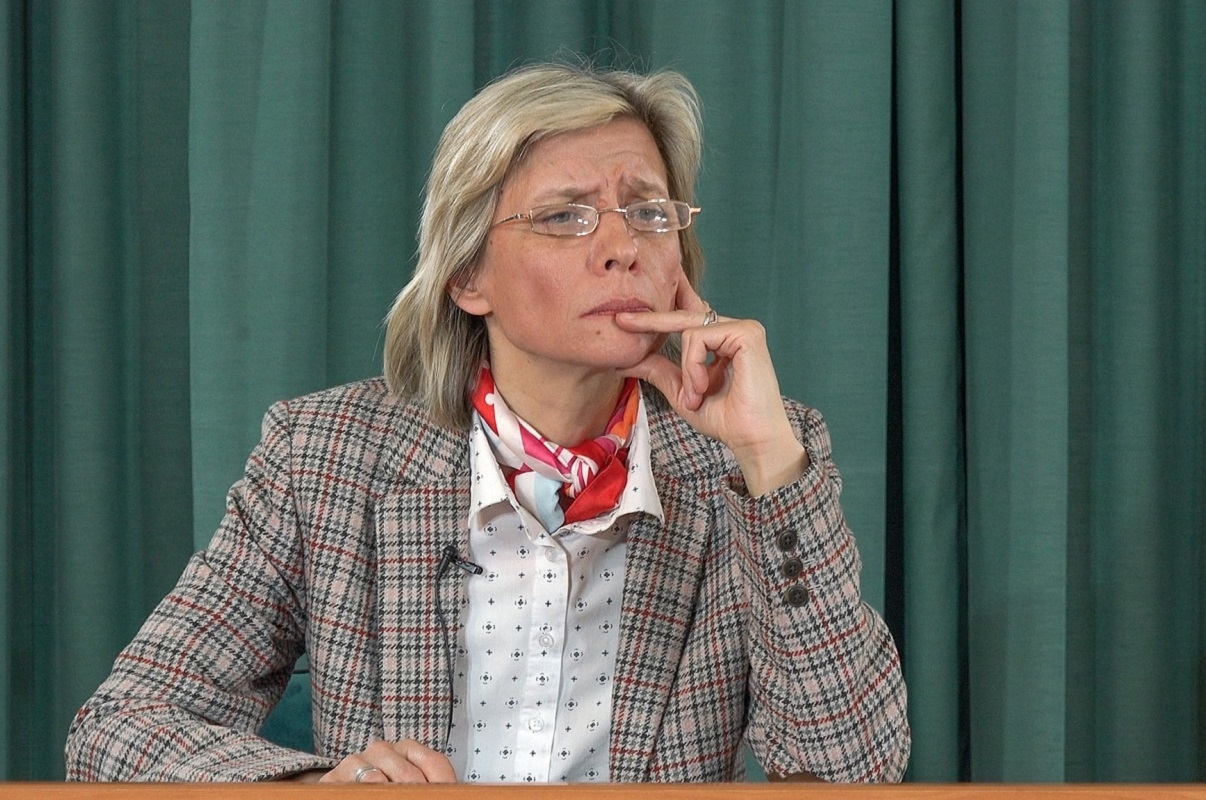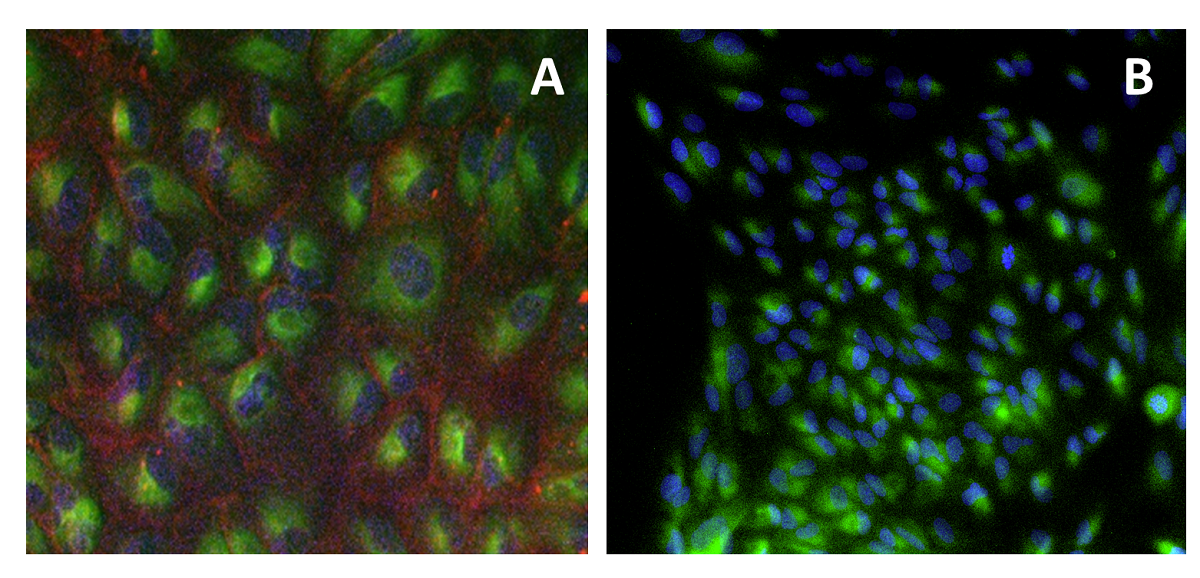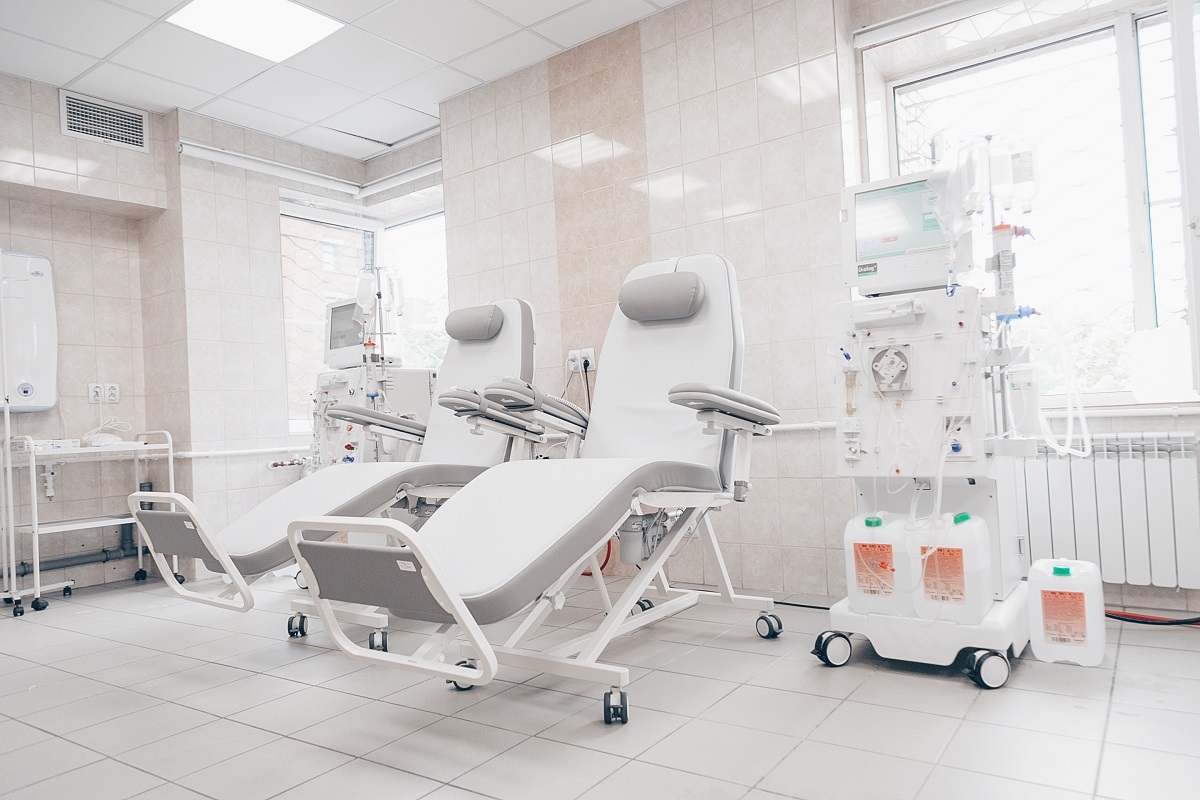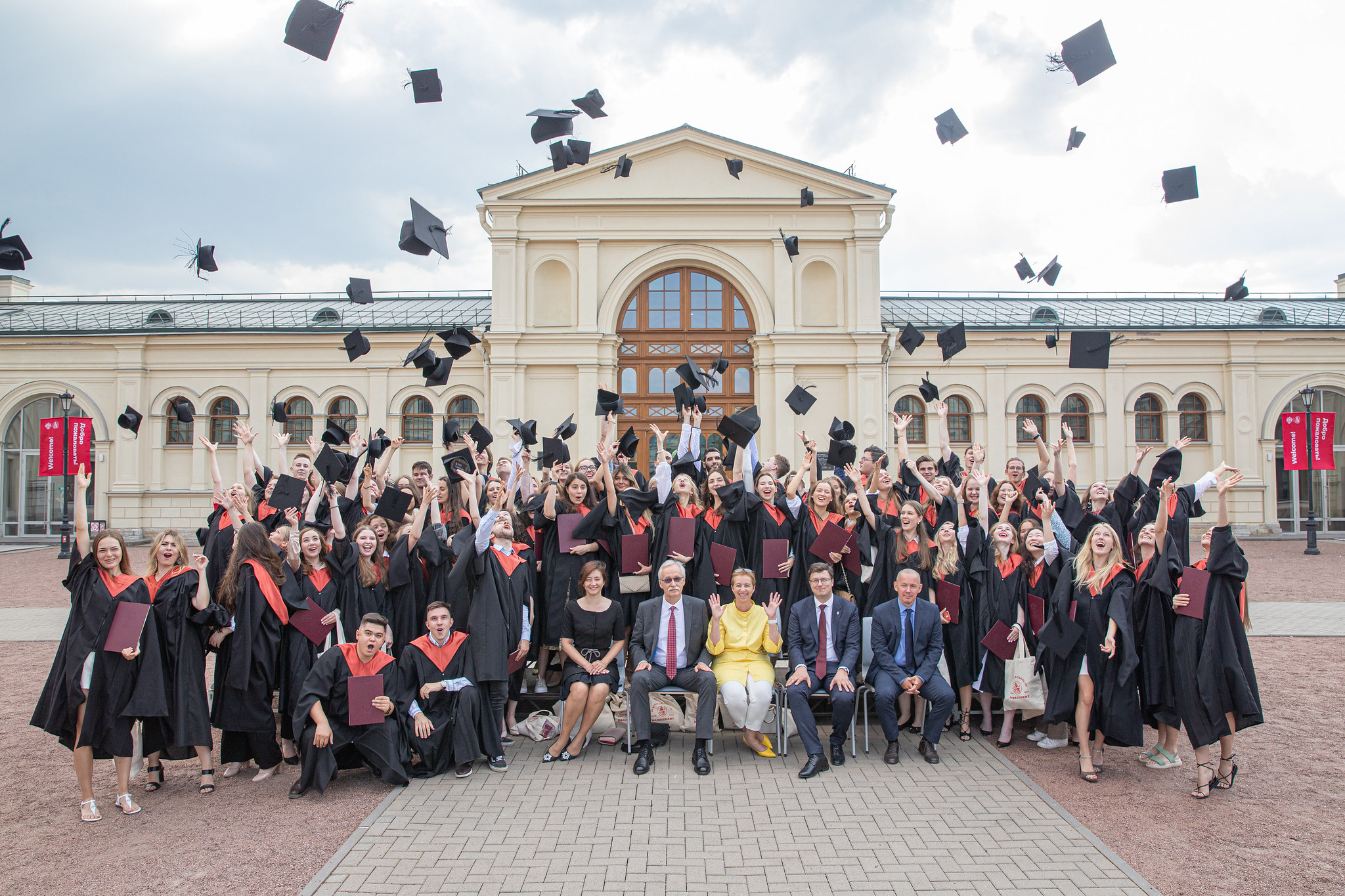Nina Shcherbak, Associate Professor in the Department of English Philology and Cultural Linguistics at St Petersburg University, is a prominent figure in St Petersburg University and beyond.
Her lectures on literature are well and generally known in universities from Finland to Scotland. We have talked to Nina Shcherbak about: her work on the manuscript about Nabokovs’ family and home; the scope of her research; and known why the town of Voronezh is what UK’s students opt for, rather than Moscow or St Petersburg.
In January 2022, there was a conference to mark the 130th anniversary of John Ronald Reuel Tolkien. You delivered a report that focused on The Lord of the Rings in metamodernism.
Could you please tell us about your report? How did you come to study this topic?
I have spent much time in England. There is a strong bond between me and England. For me, England is a country where elves live. Of course, I am joking. England is an old country. In London, there are places where you can find traces of druids, members of the learned class who acted as priests. In the city of Lancaster, there are streets with the names featuring the word bashful, which means shy. These streets enabled ‘bashful’ young ladies to avoid the unwanted attention on their way back from the port. There are certain ties between etymology and history. We can enjoy Jeanette Winterson’s gorgeous writing about the River Thames as an old river where shards and stones can be found, the fragments of someone’s life. And Tolkien is incredibly sensitive to the history and word.
The conference that marked the 130th anniversary of J.R. Tolkien was held by the A.M. Gorky Institute of World Literature of the Russian Academy of Sciences. Just recently, my article on Scottish and Irish women’s prose has been published in the Institute’s journal. It was interesting to talk with colleagues and hear about different views on the classical tradition. Approaching Tolkien through metamodernism is a bit of joke. I have officially disputed with the concept of metamodernism. Metamodernism is scientifically infantile. Yet an experiment and an appropriate approach towards the topic can generate a creative tension. So, I dared to deliver the report.
Metamodernism is a term that articulates developments in contemporary culture (after the 1990s). As metamodernism is a reaction to modernism that is associated with the aesthetics of destruction, posttraumatic stress disorder, oscillations, it empathises aesthetics and psychology. It is primarily associated with the search for the genuine self, answers to the questions about the essence of our being, and our reflections on where we are moving to after postmodernistic cultural and spiritual shocks.
How Tolkien constructed languages has always aroused great curiosity in me. Yet Tolkien’s paganism and love for magic are far from the orthodox traditions cherished by his friend and a writer C.S. Lewis. For me and Russians, Orthodoxy is something more intimate and close even if the whole world is for magic. Orthodox priests tell that miracles don’t produce or lead you to faith. Quite the opposite, faith produces miracles. This is a deep and vital thought. And it is not about Tolkien at all.
Could you please tell us about the project on preparing a manuscript of the book about the Nabokovs’ home? Could you recall any curious facts or details?
This is an incredibly engrossing project that is headed by Professor Abdulla Daudov, Director of the Institute of History at St Petersburg University.. The project has brought together a highly professional team: Andrei Astvatsaturov, Fedor Dviniatin, Evgeniia Abramova, Tatiana Neuimina, Vladimir Torbik, Evgeny Khodakovsky, Nikolai Shtykov, and others. The working group meets once a month. We are constantly working on the manuscript. I delivered a preliminary report at the conference ‘Power, Society and Archives’, which was held in October 2021 in the main building at the University. The conference and the round table discussed the role of archives in the life of the country and its history. It was a very bright conference with fascinating reports. The book is expected to be both a professional, historical work and a popular book for wider readership.
I am working on two chapters. The one focuses on the Nabokov’s family and how Nabokov’s home is depicted in his works. The other chapter is complex and sophisticated. It mainly concerns the Soviet period and Nabokov’s home.
Nina Shcherbak, Associate Professor at St Petersburg University
‘I am following a literary approach to both chapters, which are almost complete. In other words, I am delving into how this topic is depicted in his works. For example, among what I am exploring is what has happened to the museum artefacts and paintings which were given to the Hermitage after the Revolution’, said Nina Shcherbak.
Apart from your courses and lectures at the University and open lectures, you work with universities across Europe: Portugal, Finland, the University of Zagreb, the Freie Universität Berlin, the University of Edinburgh, and the University of Graz in Austria. Do you think that university cultures across the globe are similar?
I have lectured in the leading European universities that are the University’s partners. I have been a head and a member of projects and grants which I have won in the open competitions. This experience is a special mission, and also a diplomatic one. It was a mission largely due to the fact that I represented the University, took part with our international colleagues in partnership projects, engaged in education and research, academic mobility, and planning.
I do love the University. It is a true pleasure and honour to work for the University. For the previous three years, I had lots of projects. It is entirely unexpected to a degree because the tasks we had to solve assume strenuous efforts and responsibility, yet how we have solved them is maximally effective and successful. What we have gained is to ensure our future collaborations and partnerships in education and research between universities, contacts, a large number of joint publications in the most prestigious journals, new projects, and academic mobility for students.
As part of collaboration with the University of Graz in Austria, I delivered a course of lectures on the Silver Age and the Soviet period in literature and children’s literature. Our Austrian colleagues also visited the University to deliver a course of lectures. Additionally, they visited other universities across Russia. Their lectures on literature were a great success. I was also engaged in a cross-disciplinary project, delivered a report in the wide-ranging conference in Halle (Saale) in Germany. The conference focused on transgenerational trauma in literature. Later, we published a book in one prestigious publishing house in Vienna. The book presents a collection of works of our international colleagues. My publications and research were mostly concerned with Vladimir Nabokov and his works.
The University and European universities have much in common. What they do share is an ‘inner’ tendency that universitarians have is living in their unique world. Once you are at the University, you are on your territory of hopes. This is what many classic books are about. And Tolkien was not accidentally mentioned at the very beginning. The University is more than about gaining practice or acquiring skills. It is a world of mystery and discoveries, a world of how you can gain knowledge.
Studying at the University is absorbing. Teaching at the University even more so.
Nina Shcherbak, Associate Professor at St Petersburg University
Professor Lyudmila Verbitskaya talked much about the universitarians. This is a core concept. It is a union of honour, valour, friendship. The universitarians have always been freedom-loving, critical to what is happening around, yet very close to each other.
What were the topics of your lectures abroad?
My recent lectures focused on hermeneutics, post-colonial literatures in English, women’s narratives, psychoanalysis in literature, so-called superficial reading, transcendence in poetry. These all stem from our discussions with international colleagues and my research endeavours. It was rather unexpected but my lecture on women’s narratives and women’s prose attracted lots of Swedish students in Finland. I was surprised and thought that they must have known a lot more. We had vivid discussions and even lively debates.
On my way to Switzerland, I had an impression that I was once again experiencing the time when I had studied in the UK. I got into the train from Zurich and several hours after I was not far from Montreux, where Vladimir Nabokov had been living during his last 20 years. I was accommodated in a hall of residence, just as in Lancaster in the UK where I had pursued my postgraduate studies in teaching methods and linguistics on the Queen’s scholarship of the British Council and the Foreign Office of the UK.
There was something mythical in this trip to Switzerland. Mystics is a gift and invisible ties with our first teachers. Long ago when I was a second-year student at the Faculty of Philology, we had lectures by Professor Boris Averin, who was a recognised expert in Nobokov studies. Books were not the only thing he would talk about. What he was contemplating about was what the inner world of characters was, what metaphysics was. He told us that life was not only material and there was another world. For people abroad, Russia is mostly associated with the concept of another world and, probably, an ability to gain a deep insight into the life itself. Life is just an incredibly brief period of time, and maintaining good relations with people around you is important as is nurturing and refining your inner ‘self’. And the rest is not as important.
My lectures were about everything. Yet mostly about Russia: about the Russian heritage, cinematography, literature, and culture. The lectures about Dmitry Merezhkovsky, Ivan Bunin, or Vladimir Nabokov are a hard nut to crack for European students. Dmitry Merezhkovsky wrote numerous works about paganism in its beauty and Christianity, in its incorporeality and self-denial. The Silver Age was an attempt to make incompatibles co-exist. How to talk about this with young people who regard these concepts as purely abstract? This was also among what we had to solve. You are always experiencing or try to experience what you are talking about. This is the only way how to pass your experience on.
Do international students know much about our country?
They know little about Russia. Yet they are open-minded and outgoing. In Edinburgh, I delivered lectures on the Russian classic literature in cinema. During one lecture, there was a son of the famous English writer who originally came from Russia. Her name was Eugenie Fraser. She once stayed at our house and later wrote a book The House by the Dvina about the city of Arkhangelsk and Russian aristocracy. It was a truly amazing happening. Once, a student from the University of Edinburgh was exceptionally precise in how he perceived a Hollywood film based on Leo Tolstoy’s novel War and Peace: ‘Why does the film depict the higher society which Leo Tolstoy was so eager to avoid because something utterly different was more important for him?’ Isn’t it an astonishing fact? The Orthodox path for Pierre Bezukhov is so winding, complicated, yet so evident and lucid for a first-year student from abroad who knows about Russia only from books and films.
When I was working in Sheffield in England, students preferred to study the poets of the Sliver Age. We studied their biographies and poems. My students were more likely to choose a tranquil and peaceful town of Voronezh as a destination town for academic mobility, rather than St Petersburg. It was strange for me. For students from Sheffield, the allure of big cities was too ambitious. Studying in small towns is easier for them. Some of them visit London only when they are 18. A foreign country is always about discovering something new. I have written much about England as I have experienced it from inside when I was studying and working there.
Having completed my postgraduate studies in Lancaster, I worked at the University of Sheffield as a visiting lecturer from St Petersburg University to teach the Russian language and literature. In London, I worked as a newspaper reporter, worked in the European Bank for Reconstruction and Development (EBRD) located in the City of London. This experience was so mesmerising that when I returned to Russia to work in the Department of English Philology and Cultural Linguistics at the University, I wrote a number of scenarios for the TV Channel ‘Kultura’. Our TV programme, whose presenter was People’s Artist Andrei Tolubeyev, won the State Prize of the Russian Federation.
Can you think of a country you love most?
My lectures in Portugal are a whole story. It brought me lots of new discoveries. It is a fabulous country. Portuguese people are incredibly friendly partners and high-calibre diplomats. They taught me international collaboration and engagement. Portugal, largely because it is a modest country with perfect diplomacy, has been neutral in wars over a substantial period of time. It remained neutral both in World War I and World War II.
The air in Lisbon is so fresh that you feel you are on the edge of the world. There are lots of students in universities across Portugal. Study groups are enormous. There are some students from Brazil, they have more traditional values. Some students have European attitudes. They are more open-minded. Lisbon is gorgeous. Yet its beauty is not about what we tend to consider beautiful today. Its beauty is more about primeval beauty. Recently, I have been reading Lawrence Durrell’s The Alexandria Quartet. It is not about Portugal, though. It is about the bygone world of ocean and relationships. Yet in Portugal we can experience this bygone world once again. Students are friendly, enquiring, innerly relaxed and wise. It was just an unforgettable time, when you delivered a lecture that lasted two astronomic hours and then went for a walk in the mountains to take a deep breath of fresh air. They told me about their history and explained what soledad (‘light sadness’) meant. Some of them came to us to study later. We had some bright publications in the serious journals.
My last trip to Portugal was almost during the pandemic. I received so warm welcome, even when we had to wear white gloves. I returned to Moscow by the last plane, having contacted the Embassy and the Ministry of Foreign Affairs. Yet there was a feeling of joy that we could do what we had planned and signed all documents. Despite gloomy events that awaited us ahead, I had a feeling of hope that future academic mobility would go back to normal.
Many of your publications particularly focus on the topic of silence. Could you please tell us about what writers write about silence and why?
I am not a silent person. Yet sometimes I am prone to silence. I appreciate mathematicians and musicians. When talking with them, you say little. It is just another level. Philologists are more talkative!
Silence is a bright topic. I started to study it together with musicians, or they introduced me to the topic. It is an important topic in contemporary literature: author’s sensitivity, his/her attitude to a language and a word. Among them are my favourite writer Jeanette Winterson, Thomas Stearns Eliot, Jerome David Salinger, and Vladimir Nabokov.
Nina Shcherbak, Associate Professor at St Petersburg University
Quietness and silence are different concepts. Quietness belongs to the world of nature which is imposed on the human world, while silence is a sign with a meaning. The characters of novels are silent when they protest, conceal, or discovering something mysterious. Quietness is usually associated with an inner search which is invisible in the quietness and stillness around. Quietness makes you hear. Interestingly, the lectures in the topic may last two hours!
Pavel Florensky, who was a Russian Orthodox theologian, said that human communication is wordless. Rather, it is mediated through a spirit, that is an inner feeling that creates unity. This is why I talk so much about transcendence in poetry. Much is said about how ‘something’ tells meanings to poets, how they listen to them and recreate. And the related topic is psychoanalysis that distinguishes various meaning through a word and reveals the human unconscious. Seeing through the text is fascinating.
In this regard, another question: recently, in the Novoe Literaturnoe Obozrenie (New Literary Review), you have published your joint article with the Doctor of Art Studies Svetlana Lavrova that focuses on the melody of Nabokov’s speech. You discuss the novel Ada in the original (English version Ada or Ardour: A Family Chronicle). Why does Nabokov need music? And how does he convey music in writing?
Svatlana Lavrova, who is Doctor of Art Studies and Vice-Rector for Research at the Vaganova Academy of Russian Ballet, has prepared a brilliant doctoral thesis that focuses on new music and its philosophy. Her thesis is an encyclopaedia of philosophy and music. It sums up a colossal work on music and its possibilities. The article traces what is shared by music and Nabokov’s works and language.
Nabokov wrote that music was not his cup of tea and he preferred chess as a source of joy. Nabokov was experimenting with the language. And the experiment, in its turn, is a music of language, a creative ability. The language of music is abstract, and the meaning of any piece of music is only perceived as a whole, in the context of the piece as a whole. When it comes to literary language, it is different. Yet such writers as James Augustine Aloysius Joyce, Vladimir Nabokov, John Ronald Reuel Tolkien, Herman Melville, Joseph Brodsky deliberately experimented with the language to expand its capabilities, gain a deeper insight into the language, and convey what seems to be impossible to convey – to create a world by the language. It is fascinating to uncover.
Professor Tatiana Chernigovskaya at St Petersburg University and Svetlana Lavrova have recently organised a wide-ranging conference on cognition, music, and gesture. There is a work that focuses on this topic where I have published an article on the theory of sign, similarity between the musical language and the literary language. Today, the core tendency is integrating fiction and poetry, poetry and music. Much has been written and said about this topic. Yet sensitivity to the versatility of a word and genuine of a musician who decodes sounds of the Universe and creates new forms are up to date as ever.
Does Nabokov write about the time in Ada?
In this late Nabokov’s novel, there is a passage where Ada, who is the main female character of the book and a girl-demon, comments that it is the main character Van who writes about the time. She comments on his research endeavours in a simple way. She tells that we cannot know time (We can know a time. We can know the time. We can never know time. It is like). She responds to his treatise in an easy manner: ‘It is not worth stained glass, time is like…’ What does the ellipsis mean? We cannot convey some things – they are shrouded in mystery and out of reach. Even Nabokov knew it. Words can wound us, they conceal the essence which is abandoning us if too much has been said.
Lecture of Nina Shcherbak ‘Labyrinths of Meanings and the Reversibility of Time in Vladimir Nabokov’s Novel “Ada”’ is available on the webpage of the Nabokov Museum at St Petersburg University.
Could you please tell us about a series of open lectures in the Nabokov Museum and Russian Christian Humanitarian Academy posted on YouTube? How did it start?
Lecturing in the Nabokov Museum is a unique opportunity. I have delivered a lecture on the contemporary Scottish and Irish prose, then on the Nabokov’s novel Despair. Usually, there are approximately up to 20,000 viewers.
Nabokov was born in Bolshaya Morskaya Street. In his Drugie Berega (Other Shores), he remarkably depicts how he was ill and his mother went to Nevsky Prospekt by a sledge to buy a giant Faber pencil that was as tall as a human and was displayed on the English shop window. The graphite was as long as the pencil itself as a pure evidence of art is for art, with no practical application. When I walk along Bolshaya Morskaya Street, the border between the world of literature and the real world is so blurred.
The topic of lectures for the Russian Christian Humanitarian Academy is a result of a year-round sitting at the computer online. My lectures were recorded by a professional operator Natalia Rumiantseva. I have taught two courses in the Academy. The first one was rather brief. It was Psychoanalysis and Literature. The other one was more wide-ranging. It was Contemporary Foreign Literature. I tried to talk about literature, concepts, cinema, my experience in research, education, and life. I spoke much about England, its history. ‘Linguoculturology’ and ‘British and US Studies Through Language’ are among the courses I teach students in philology.
My wonderful colleagues in one industrial enterprise where I have been working have inspired me to turn to the topic of psychoanalysis and literature. They are people who always inspire me. Five years ago, I for the first time met an incredible humanness, deep humanity, sensitivity and ability to inspire. It made me interested in psychology. It was a unique happening, once in a lifetime.
Additionally, I studied psychoanalysis in literature studies in a university in Berlin where I taught. Our colleagues are to visit St Petersburg in June. Among them is an expert in works by Gertrude Stein. Psychoanalysis is a German and Austrian tradition. Largely due to Sigmund Freud it became popular among American experts in literature studies and literary critics. My aim was to recreate my experience in delivering lectures and seminars that I have had in Berlin and during my other trips.
Could you please tell us about your current projects that you are working on? Do you plan something interesting for 2022?
One of our wonderful teachers used to say that ‘if you have lost your pin or a plane has crashed, these tragedies are all the same to a women’s brain’. In this regard, a large-scale project and a single lecture can be equally important. The conference ‘Current Issues in Linguistics’ at St Petersburg Electrotechnical University ‘LETI’, where I have presented plenary reports for several years in a row, is important and interesting. We are big friends with St Petersburg Electrotechnical University ‘LETI’ and very proud of our collaborations. I am very grateful to my colleagues: Andrei Shumkov, Tatiana Shulzhenko and all colleagues at the Department of Foreign Languages.
The world is so volatile. We should approach what is happening to us as it is. Today, it is vital. I wanted, as usual, to tell you about the countries and continents which I was planning to visit. Mexico was on the list of countries where I was supposed to go to deliver lectures, yet due to the pandemic I could not.
To tell you the truth, the most important discovery is a feeling that you ought to give way to life. Generating ideas is important. Even more important is to see and catch what life has for you. In this regard, I am a believer or thrive to be a believer. Admitting your errors is more important than accepting your opportunities. I will try to understand how I can do it by perceiving what is around me. To this end, silence is vital.













